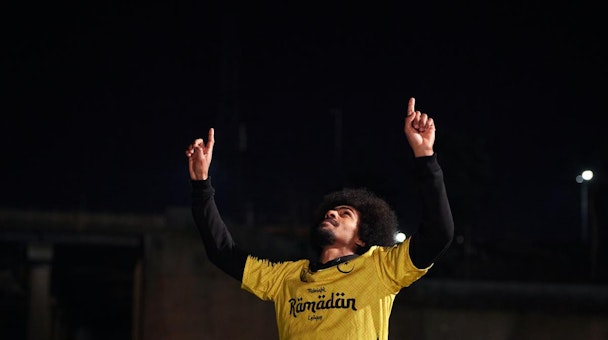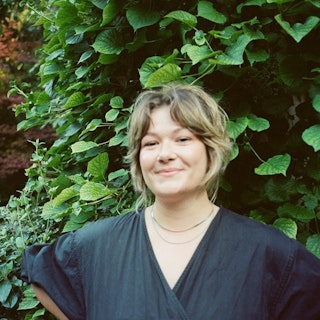British Asian representation in ads: ‘You can’t just show a woman in a hijab and call it a day’
Despite being the second-largest ethnic group in the UK, British Asians are notably absent from the advertising landscape. As part of The Drum’s Marketing and the Marginalized Deep Dive, we ask how this is being rectified.

The EA Sports Fifa campaign by Adam&EveDDB was celebrated for its depiction of British Asian life
When it comes to the representation of the British Asian community in the media, depictions far too often lean on stereotypes. “The advertising industry in the UK has traditionally viewed British Asians as an exotic addition to a campaign, rather than having the confidence to put them at the center,” is how Amar Singh, head of content and communications at MKTG and former senior brand manager at Budweiser, sees it.
For Selma Ahmed, a creative director at Adam&EveDDB who worked on the EA Sports Fifa campaign that won the Channel 4 Diversity in Advertising Award for its representation of British Asians and the Muslim community, telling the story of the Midnight Ramadan League was the first time she’d ever seen a portrayal of her community in an ad that felt authentic. “I’d just never seen it done right,” she says.
Diversity of experience
Both Singh and Ahmed say that one difficulty in accurately depicting the lives of British Asians is that there is no one singular experience.
“Not only have you got different generations with a different experience of different waves of immigration to this country, but we’re also a hugely diverse community within ourselves, from a wide variety of countries, regions and religions,” says Singh.
Ahmed explains that, so often, creatives are briefed to cater to as wide an audience as possible, so that when it comes to attempting representation of a diverse, marginalized community, it “becomes tokenistic by nature”.
“When it comes to showcasing British Asians, you can’t just show someone who is Muslim or a woman in a hijab and call it a day because there are so many people within this community for whom that won’t ring true,” she says.
Behind the scenes
Sunny Kapoor was music supervisor on that EA Sports campaign that won the C4 award. The managing director of creative music company Curation believes the issue of representation in ads is becoming redundant as it neglects the real issue of representation in agencies themselves.
“We talk about these ads, but if you look behind the curtain it’s still a bunch of white people making them,” he says. “Not every Black and Brown person is the same, there’s nuance to our experience and that nuance comes from getting people into the room.”
Last year, after the murder of George Floyd sparked global protests for the Black Lives Matter movement, many agencies and companies within the ad industry mobilized to update their DE&I policies and committed to addressing racism and lack of representation internally.
Ahmed points out that, in many instances, this saw agencies open up work placements or graduate schemes for young talent from underrepresented communities, and that this put a huge amount of pressure on people entering the industry. “You want to make creative work and what you really care about is coming up with interesting ideas, but then you’re suddenly expected to be the voice for and represent a huge community!
“I think if there was more diversity at the C-suite level, it wouldn’t feel so hopeless.”
Leadership
Singh does think agencies have made improvements when it comes to being vocal on the issue of diversity but says it shouldn’t have taken a tragedy like George Floyd for them to attempt to get their houses in order. “It’s all well and good posting a black square on your Instagram, but if your entire board and senior leadership team are white it’s going to become clear pretty quickly.”
According to the Advertising Association’s All In census, which last year measured diversity within the advertising industry, only 3% of senior leadership is from a British Asian background and just 1% is Black.
However, Kapoor says that the conversation should now be moving past leadership and on to the importance of Black and Brown-owned agencies within the industry. “A lot of agencies want to build equality up to a certain level, but they don’t want people from ethnic minority backgrounds to be at the absolute top. If I own my company, then I have full autonomy, I have a massive say in issues like representation. But if I always have a boss to report to, they can always say that I can’t.”
Engaging with communities
There is consensus among the ad professionals we speak to that a lack of diverse leadership can also account for the lack of genuine engagement with the communities they wish to depict in their ads – and that this results in groups left untargeted, their needs unmet.
“I think about my grandmother,“ says Ahmed. “There are so many women like her who came to this country and don’t speak English, but she still watches TV, she still sees the billboards. We need to ask ourselves how we are serving these people. That would allow us to be a lot more integrated into these communities.”
According to Singh, this should be enough to encourage agencies to diversify their talent pool, as it would allow them to work into untapped markets. “If they can’t see the moral imperative in making agencies more diverse, then they could at least see the business imperative.”
It doesn’t escape his notice, however, that a lot of noise about wanting to be diverse is made by agencies based in London boroughs like Shoreditch, which rarely look past their own front door.
“These trendy ad agencies are on the borders of Tower Hamlets, one of the most ethnically diverse areas in England as well as one of the most socially and economically deprived. So it’s all well and good agencies asking how they get more multicultural faces on screen, but if you’re not engaging with the people in your own area and inviting them into this incredibly attractive world you’re building, then in my view you are failing.”
Kapoor says that on the EA Games shoot, Quaiser, the young boy who starred, wanted to get more involved with production. He’s now set to take up multiple production placements within the industry. Kapoor says this is just another example of how the industry could help to elevate young people from ethnic minority backgrounds and, in turn, bring themselves more into contact with diverse communities.
“There are plenty of kids to take a chance on and the industry has done it before with plenty of wealthy, middle-class white people who take up roles through their parents or aunts and uncles and through nepotism.“
He concludes that this perpetuates the rich, white middle-class environment within agencies, which is in turn reflected in the ads they created.“We now need to focus on creating a safe space where Black and Brown people can come into work and see people who look and talk like them.”

